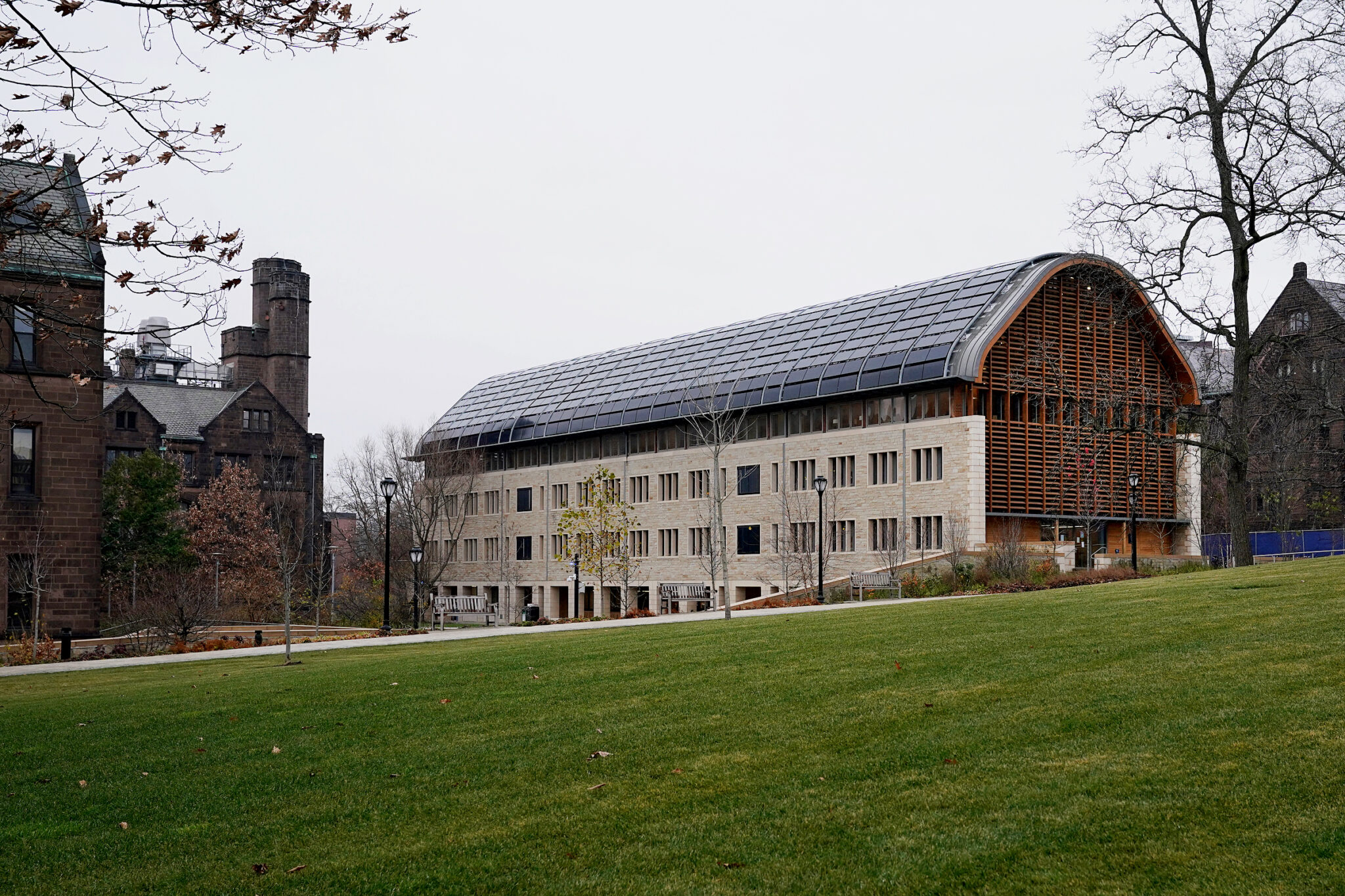Yale team awarded $5 million from Department of Energy to combat climate change
Researchers from the Yale School of the Environment will examine the impact of natural carbon-capture methods to reduce global warming

Tim Tai, Senior Photographer
A new Yale initiative backed by the U.S. Department of Energy has its sights set on studying natural ways to remove carbon emissions from the atmosphere — and scaling those processes up to fight climate change.
Led by researchers at the Yale Center for Natural Carbon Capture and the Yale School of the Environment, the project also hopes to develop tools to measure the effectiveness of natural carbon capture methods, which researchers believe is crucial for addressing the issue of climate change.
The project’s funding comes from a $5 million grant as part of the DOE’S Earthshot Initiative, an agency-led effort to increase decarbonization and help the United States reach its goal of a net-zero carbon economy by 2050.
“There’s no time to sit around and twiddle our thumbs,” said David Bercovici, the Frederick William Beinecke Professor of Earth & Planetary Sciences and co-director of the YNCC. “This project is really connecting the models for soils and enhanced weathering to rivers and estuaries and all the way to oceans.”
In 2010, the United Nations agreed that global warming caused by greenhouse gasses needs to be contained to below a 2 degrees Celsius increase from temperature levels before the industrial revolution. If the global temperature rises to 2 degrees Celsius above pre-industrial levels, scientists warn that heatwaves, drought, extreme weather and rising sea levels could cause mass-extinction events.
However, according to Matthew Eisaman, a professor of Earth and Planetary Studies and a researcher at the Yale Center for Natural Carbon Capture, efforts to mitigate climate change by reducing carbon dioxide emissions are not enough.
“We need billions of tons of direct removal of carbon dioxide from the air in the next coming decades,” he said.
Eisaman, who is on the Yale research team for the study, said the project’s goal is to create models to examine how carbon flows through natural systems: from the soil, to rivers and eventually to the ocean. The modeling could inform how natural methods of carbon removal, such as enhanced mineral weathering and ocean alkalinity enhancement, can be used on a larger scale.
Enhanced mineral weathering relies on using natural rock weathering to draw carbon out of the atmosphere. When rain falls, raindrops mix with carbon dioxide and form an acid that weathers silicate rocks — which make up the majority of the Earth’s crust — and create bicarbonate ions. These bicarbonate ions then wash into soil and rivers.
The chemically-basic bicarbonate runoff from this process can also help de-acidify the ocean, which is a large sink for carbon dioxide on Earth. Acidic oceans absorb less CO2 and are harmful for animal and plant life, the researchers said. Bicarbonate entering the oceans can decrease its acidity and increase the amount of CO2 that they can absorb from the atmosphere.
Projects like that of the Yale team can help scientists understand the cycles through which carbon dioxide is drawn out of the atmosphere: how it moves through the soil into waterways and what chemical reactions occur during the process.
“There is the need to track the flow of this carbon to its long term storage in the ocean as there are processes that can lead to ‘leakage’ or the loss of the captured CO2 during transport,” wrote study-leader Peter Raymond, senior associate dean of research at YSE, in an email to the News.
Models play a “key role” in verifying how much carbon dioxide has been removed from the atmosphere through methods such as enhanced rock weathering or ocean alkalinity enhancement, said Eisaman.
They can also help scientists find new ways to accelerate the process of natural carbon capture.
“[These models] are something that’s needed if these approaches are going to scale to the billions of tons per year that we need,” Eisaman said.
Created in 2021, and co-directed by YSE professors David Bercovici and Liza Comita, the Yale Center for Natural Carbon Capture supports research projects that tackle climate change — solutions that range from the ocean floor to local farms.
Calling for collaboration between researchers, Bercovici emphasized the urgency of the climate crisis. The YNCC must create multi-pronged solutions, to seek ways to capture carbon on land, in farms and the ocean, he said.
According to Bercovici, carbon capture solutions are only one facet of climate change, and other measures must be pursued, including eliminating dependence on fossil fuels and becoming a renewable economy.
“Carbon capture is not the panacea that’s gonna solve it. There’s no way, the problem is way too big. We have to be doing everything,” Bercovici said.
The DOE’s Carbon Negative Shot was announced on Nov. 5, 2021.







